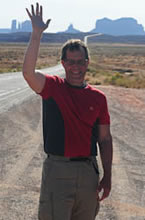My Uncle Ralph calls Yellowstone their Grand Adventure. Grandma Margaret and Grandpa Rudd Gregerson worked and played in this wonderland that only the very wealthy of the day got to see. Or, as Uncle Ralph puts it, “Certainly, they were having a good time!”
My Grandpa could fix, build, or assemble just about anything. He developed his skills during a hard-scrabble childhood in Wisconsin, where he assumed the role as man of the house at a young age. In 1914, nineteen-year-old Rudd was among the first to join the newly formed Army Air Corp. , serving as an aviation mechanic when the U. S. joined World War I in 1917. Grandpa was adept at all things mechanical.
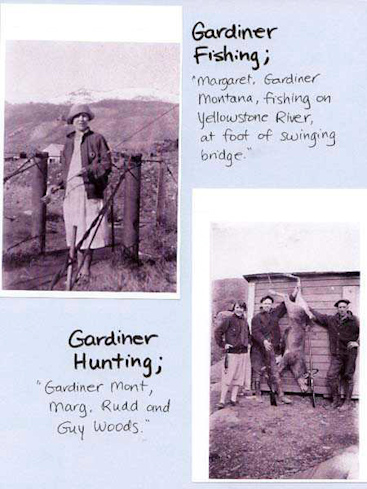
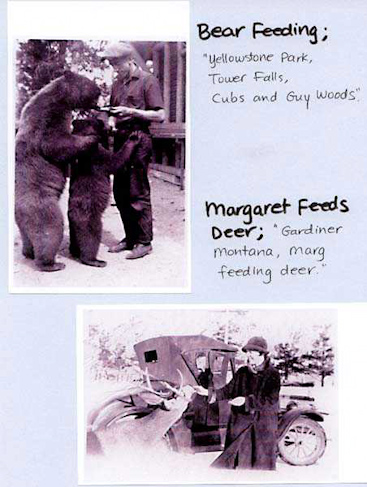
After the war, Rudd borrowed $250 from his good friend, Fred Stockings, also called “Sox,” to help purchase a nice touring car. With his new Packard, Rudd hired himself out as a chauffeur. Actress Mary Pickford also hired Rudd to drive her Essex as she squired about town with Buddy Rogers.
Wealthy southern Californians wanted to experience Yellowstone, but not the marginal roads leading there. Burlington Railroadoffered a more comfortable ride, yet folks still desired use of their personal cars upon arrival. Rudd and other chauffeurs caravaned these dudes’ cars (as they were called) to Yellowstone in the spring and back in the fall. They termed this “vagabonding. ”Uncle Ralph says, “My father was an original adventurer. ”
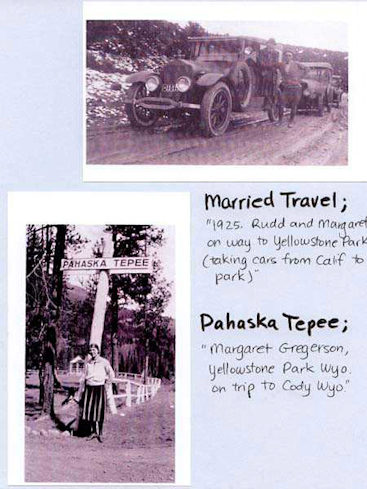
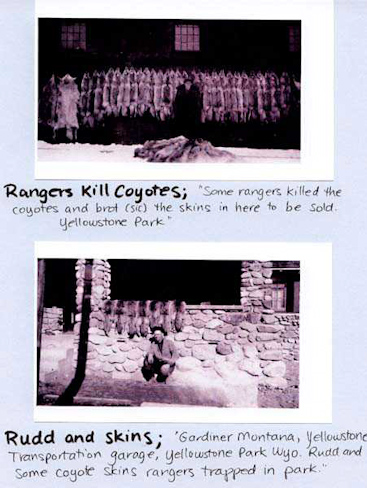
During one long trip to Yellowstone, Rudd encountered a band of bootleggers on the roadside, just one step ahead of the law. Their car broken down, they were fearful of outside assistance or unnecessary exposure. Using his mechanical skills, Rudd fixed their engine on the spot. In gratitude, they awarded him a $100 goldpiece.
Road conditions challenged the drivers more than criminal activity ever did. Often they bogged down in the muddy roadsas they followed behind the snows of springtime. “How did you get in?” folks of isolated Wyoming towns asked these first arrivals.
Once there, Rudd worked as a driver for the Yellowstone Park Transportation Company. Drivers, also called Gearjammers,sported caps, long-sleeved shirts with black bow ties, and britches, which flared at the thigh and tapered at the calf. In lieu of boots, drivers wore a long flap of leather buckled above their shoes, called puttees, (“pah-TEEs”). The bedrock of the uniform was the badge,which they considered a proud declaration to the world, “I am a driver in the park!”
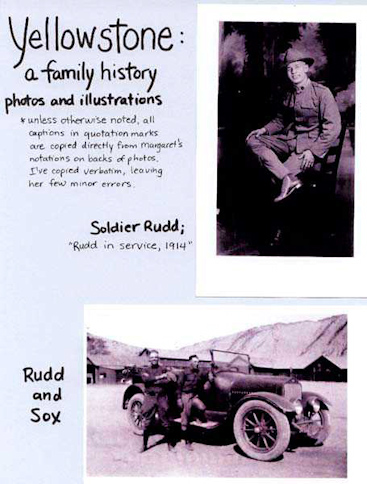
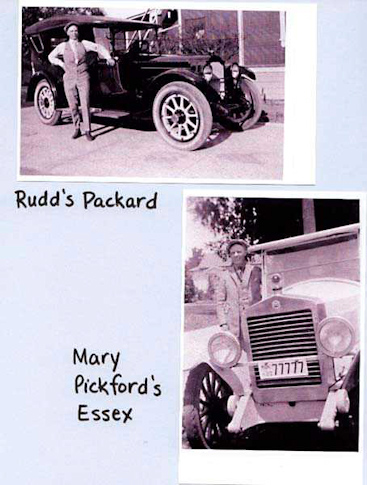
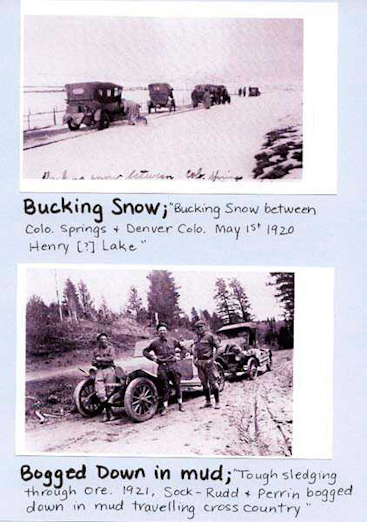
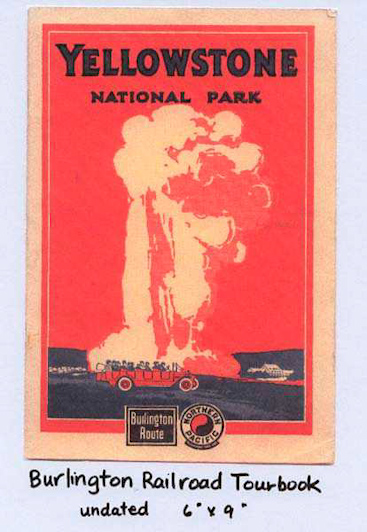
Rudd started with the ten-passengerbuses,eventually earning a promotion to drive the seven-passenger “Yellow 7” cars. Rudd drove several summers, and as one of the more experienced drivers, merited the plum role of “Touring Car”driver for private parties and visiting dignitaries. One set of notables stood out to Rudd:the Jouett Shouse family. Shouse was a former U. S. Congressman from Kansas and future Democratic National Chairman. In 1923, Shouse and his wife, Marion, brought their two young daughters, Elizabeth and Marion, to Yellowstone. On the back of a photo, Rudd wrote, “The girls sure are dandy kids. ”They had a splendid time touring the park together, culminating in a $110 tip for my grandfather.
That same year, a cautious young school teacher from Iowa stepped out of character and took a risk. Margaret Siebens, age 20, resolved to work at Mammoth Hotel for the summer, with her father’s permission and signature. Frank Siebens depended on the income of his oldest daughter to help manage the family farm and feed his nine children.
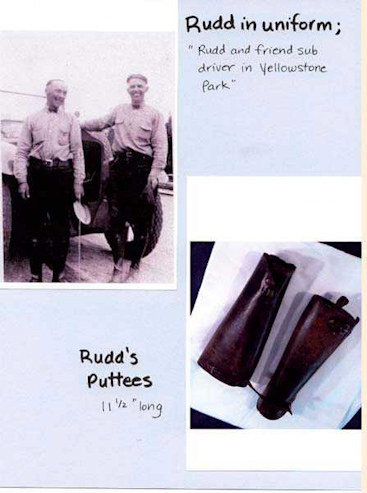
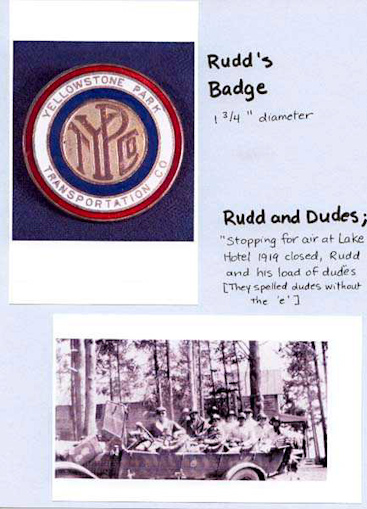
While my grandmother, Margaret, signed a contract to work at Mammoth,she seemed to float from there to Old Faithful Inn and back. We have references to her work at both places in varying capacities. As a waitress, heaving food, she was a “heaver. ”When she cleaned rooms at Old Faithful, she was one of the “pillow pounders. ”“Savages” were workers in general.
Margaret first met older, more worldly Rudd, a full nine years her senior. Uncle Ralph thinks the encounter might have been at the employee mess hall at Mammoth. My mother, more of a romantic, imagines it at an employee dance at Old Faithful. My guess is it occurred with Margaret working at the Old Faithful driver’s mess, mostly because Grandma kept a photoof this crew. However it happened, Grandpa seemed instantly smitten. At the end of the season, he purchased a small guide bookfor her that the “savages” used for autographs. On the first page, he inscribed:
August 24,1924 Here’s hoping this guide will recall to you some of our wonderful times, M. H. S. [Mammoth Hot Springs]So for every Woodchuck you should see, just pinch his tail and think of me.
Rudd Gregerson
Car no. 200
Others wrote references to each other as “you heaver” and “pillow-pounder” at both Old Faithful and Mammoth. Remembering my proper grandmother, the following inscription reads a bit shocking:
Mildred McMillan, Fairview, Montana
“I’m only a child and don’t mean to be wild. ”
Remember the day, Spike ran away,
Remember the shack, You watched me come back,
From a ____. [Her deletion, not mine!]
Smile when you think of the fun we’ve had.
Your wild and wooly room-mate, Mil
While Grandma worked as “bath-maid,” one guest wrote in her book:
You made my lonely hours more pleasant with your visits and smiles. Please punch my ticket and let me take a bath. Lovingly, Mrs. A. S. Mullendore, Holton, Kansas
Once an Old Faithful guest left behind two large silver-backedbrushes. Whether the guest gave them to Margaret, or simply forgot them, we are uncertain. What we do know is they were extravagant treasures for a humble Iowa farm girl. Grandma kept them on display in her china cabinet throughout her lifetime.
Rudd returned to Pasadena for the winter and Margaret to her job teaching school in Cresco, Iowa, but they were both back for the summer of 1924. Their relationship blossomed, and near the end of the season, Rudd proposed. Margaret asked for her father, Frank’s, permission, which he denied. While Frank was progressive about getting his daughters an education, he retained certain ideas about their obligation in supporting the family.
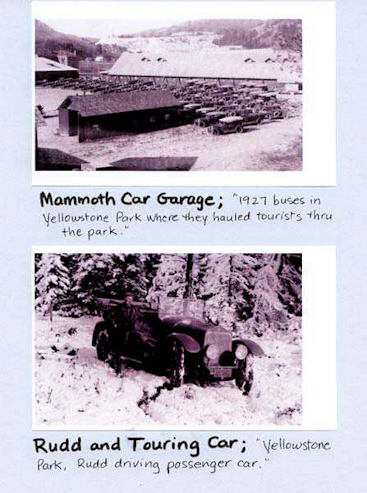
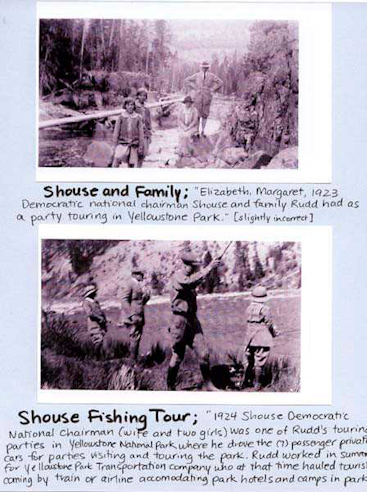
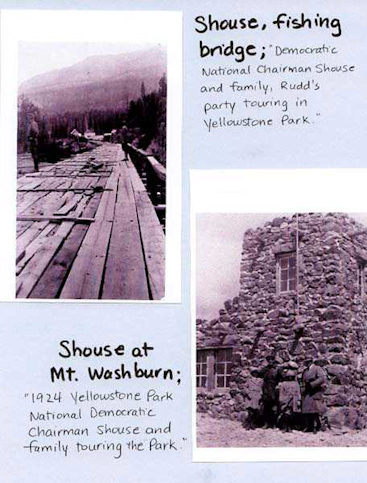
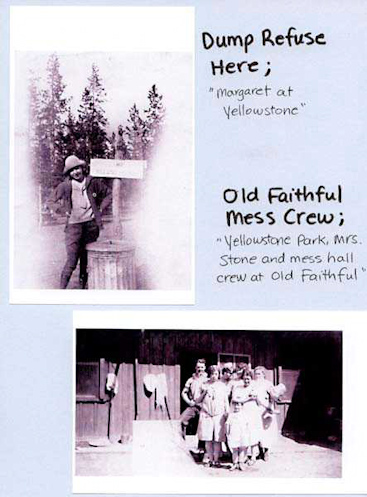
Margaret broke the bad news to Rudd. He responded to her, “Don’t you think you’re old enough to make your own decisions now?’’That impacted her greatly, but she still returned to Iowa at her father’s order.
Years later, she recalled that episode to her son. “What was I thinking!I almost lost Dad [Rudd]!”Taking a bold step, Margaret eloped with Rudd on October 29, 1924 in Santa Ana, California.
They lived in Pasadena but returned one last summer to work at Yellowstone, with Grandma apparently at Mammoth. Possibly they kept the marriage partially secret, but their many friends and relatives knew the truth. Ralph says they were something of matchmakers for other folks, too, including Margaret’s little sister, Ann. When Ann eloped with George Thompson, Frank Siebens lost a second daughter to Yellowstone. For their gang, Yellowstone was the hub of activity, and they all came for a visit. Uncle Ralph says Yellowstone was “the star of their act. ” “They were having a ball. ”
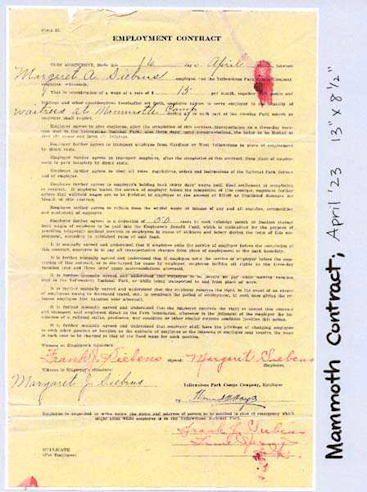
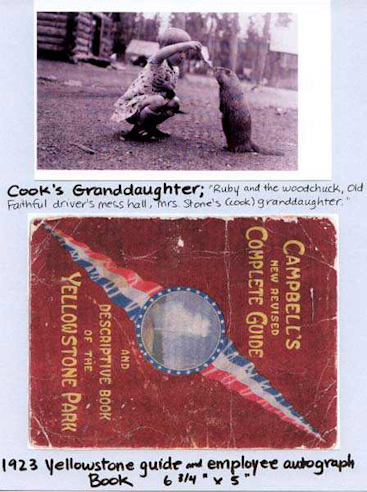
During the winter of 1925-26, Rudd and Margaret stayed in Gardiner, Montana. After the birth of Ralph in 1927, Rudd traded his vagabonding life for something more settled. He “bought a job” from a Pasadena employment agency, as was done at that time, and moved to Boise to work for the Packard agency as a mechanic. After that, he worked for United Pacific Stages, which later became Greyhound.
Ralph recalls a family trip to Yellowstone in the early 1930’s as a nostalgic revisit. In the mid-30’s, my grandparents hosted a Yellowstone get-together of close friends and family at their home in Boise. Ralph explains they were still pretty young and “had a high-old time. ”My mom believes they continued visiting the park for the coming years—and decades.
As a young girl, I remember the silver brushes my mother eventually inherited. Perhaps I used them on my Barbie Dolls. On our family room wall, Mom hung coyote and badger skins. These were both scary and fascinating creatures with black marble eyes and sharp teeth, ready to attack at any moment as we watched cartoons. In second grade, I took the badger to “Show and Tell,” explaining how my grandpa got it from Yellowstone Park in the 1920’s. On Mom’s china shelf stood a tall glass ornament with colored sands which formed rainbow designs and a bear figure. I always thought this was pretty ugly. Now we read the inscription at the bottom, “Colors of the Grand Can(y)on” of Yellowstone. These are colored sands someone collected from the thermal areas in the 1920’s! Suddenly, it is beautiful.
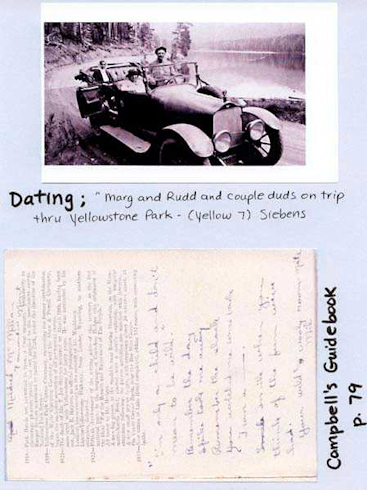
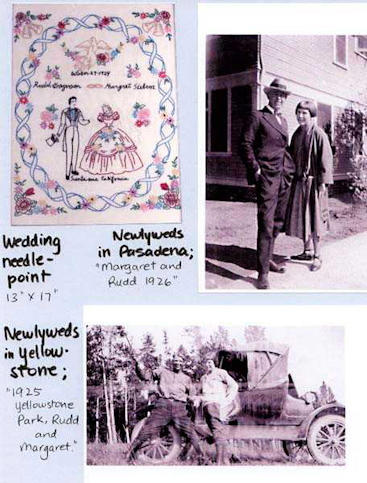
My own memories of Grandpa are of him sitting on our cabin couch, adjusting his hearing aid. (All those years of loud machines severely damaged his hearing. )We grandkids sat riveted as he told us his best stories, his Yellowstone stories. Nearly trembling, I listened carefully so I would know what to do if I ever got attacked by a Grizzly while in my sleeping bag, as had happened to some unfortunate campers long ago.
Another favorite bear story exposes Grandpa’s capacity as a prankster. One night at Yellowstone, he carefully sprinkled a trail of sugar on a path leading to a men’s dorm, up the stairs, and inside. He propped open the door, and waited. Sure enough, a black bear followed the sugar inside. With a loud bang, Grandpa slammed the door shut, frightening the bear into a tizzy. Sleeping “savages” awoke, screaming and hollering, some of them jumping out of windows to escape the crazed, trapped bear.
Mom never told us these stories for fear of frightening us, but she watched from the cabin kitchen, smiling, as we heard them.
Yellowstone is our nation’s heritage. Yellowstone is my family’s heritage.
